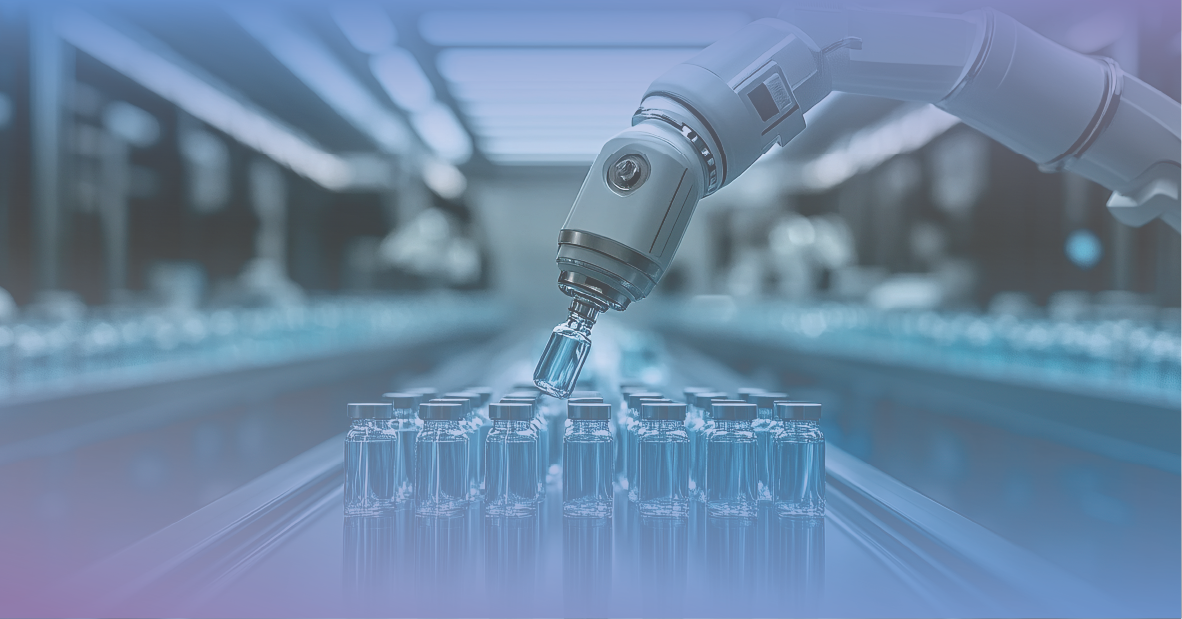Blog

How AI & Machine Learning Are Transforming Aseptic Processing
The pharmaceutical industry is increasingly embracing Artificial Intelligence (AI) and Machine Learning (ML) to enhance aseptic processing. These advanced technologies not only boost efficiency and compliance but also ensure product safety and process reliability. Here are real-world examples demonstrating how AI and ML are reshaping traditional aseptic environments:
1. GSK: Predictive Maintenance & Quality Control
GSK utilizes AI-driven predictive maintenance to monitor aseptic processing equipment in real-time. By analyzing sensor data, AI predicts equipment failures before they occur, minimizing downtime and maintaining sterility assurance. Additionally, machine learning algorithms analyze historical batch data to detect quality deviations early in the manufacturing process.
2. Pfizer: Automated Environmental Monitoring
Pfizer has integrated AI-powered monitoring systems in their aseptic facilities. These systems continuously analyze environmental data (e.g., temperature, humidity, particulate matter) to maintain stringent cleanroom standards. Through machine learning, the system learns from historical trends to optimize environmental controls, reducing contamination risks.
3. Merck: Enhancing Process Control
Merck employs machine learning models to optimize bioprocess parameters in real-time. AI-driven analytics evaluate process data and adjust critical parameters dynamically, ensuring consistent product quality and regulatory compliance. This adaptive approach is particularly valuable in maintaining aseptic conditions throughout the production cycle.
4. Roche: Digital Twin Technology
Roche is pioneering the use of AI-based digital twins in aseptic processing. These virtual replicas of production lines enable operators to simulate and test process changes before implementing them in the real world. The machine learning models provide insights into potential process improvements and help avoid process disruptions.
5. Novartis: Intelligent Batch Release
Novartis integrates AI systems to automate batch release processes. By analyzing quality control data, machine learning algorithms accelerate release times while ensuring compliance with Good Manufacturing Practices (GMP). This approach enhances operational efficiency and maintains sterility standards in aseptic environments.
Join Us to Learn More!
Experience firsthand how AI and ML are shaping the future of aseptic processing at #VLaseptic 2005:
- 7th Aseptic Processing: Compliance, Robotics & Automation
- June 11-12, 2025
- Vienna, Austria
- Click Here to Register Now!
Engage with industry leaders, explore cutting-edge innovations, and discover practical insights into implementing AI and machine learning in aseptic processing.
Conclusion: Embracing a Smarter Future in Aseptic Processing
The integration of AI and machine learning in aseptic processing offers a wealth of opportunities—from enhancing process control and predictive maintenance to environmental monitoring and batch release automation. As the industry advances, these technologies will play a critical role in ensuring compliance, safety, and efficiency. Don't miss the chance to be part of this transformative journey!
#AsepticProcessing #AI #MachineLearning #PharmaInnovation #Robotics #Automation